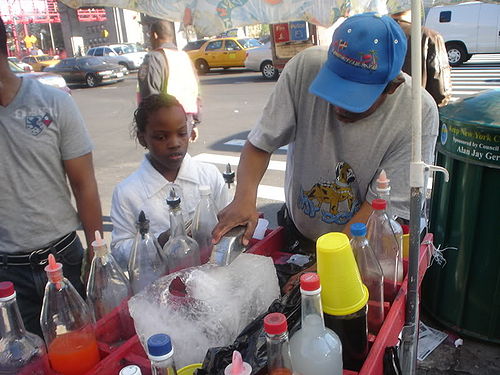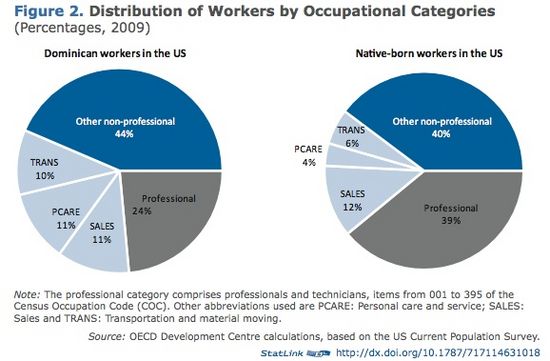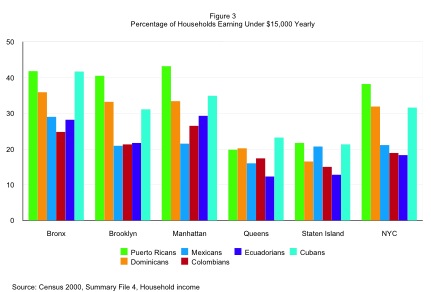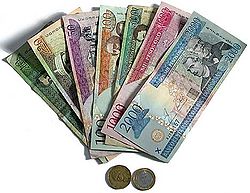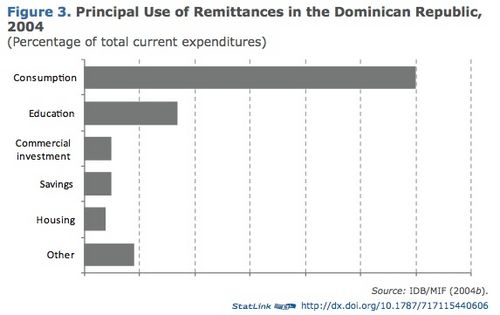Income and Labor ForceFrom From the Island to the City: Dominican Communities in New York City
IntroductionLike many other minority groups, Dominicans play a variety of roles in the United States economy as well as in the economy of their place of origin, the Dominican Republic. During the past three decades, there have been large influxes of Dominican immigrants coming into the U.S. with hopes of gaining higher incomes and finding refuge from political and economic turmoil. Prior to the 1980s, the main source of revenue in the Dominican Republic came from sugar production. However, when demand for sugar decreased, the country faced immense economic turmoil forcing many of its citizens to immigrate to the U.S.Since most immigrants arrive with a low level of schooling, the majority of them have low paying non-professional jobs. However, Dominican immigrants manage to send a significant sum of money to their relatives back home, a practice known as sending remittances, which helps to support the economy of the Dominican Republic. In the Dominican neighborhoods, snow cones are called “frío frío”. “Frío” is the word for “cold” and is thus named for the cold chills one gets while eating it. This picture on the top is showing a Dominican man trying to make a living by selling snow cones on the streets. Socio-Economic Status of Dominicans in New York CityIncome and Poverty LevelFigure 2 shows the distribution of Dominicans compared to native-born workers in the United States according to occupational categories such as professional and non professional jobs. This shows that a significantly larger group of Dominican immigrants hold lower status occupations especially in sales, personal care, and transportation professions. Education is one of the foremost reasons for this issue. However, recent data from the American Community Survey in 2008 has shown that there are about 90,000 who hold a bachelors or other professional degree. [1] Dominican socio-economic status in New York City is one of the lowest of the immigrant groups in the city. Out of the total Dominican households in the city, 31.9% made incomes below $14,999 (poverty line), while only 8.5% made incomes above $75,000.[2] The high percentage of Dominican families in poverty is due to various reasons which include family structure. Many of the families in poverty are one-parent, female-headed families, resulting in fewer sources of income. In 2000, approximately 38.2 percent of Dominicans in New York lived in female-headed families, compared to 22.1 percent for the overall city.[3]
This graph specifically compares the number of different Hispanic groups who have an income below the poverty rate, which is $15,000. According to this bar graph, Dominicans have the second highest percentage of households with incomes below poverty levels among the Latino communities in New York City. Unemployment RatesThe participation of Dominican immigrants in the labor force is lower than the rest of the population of the nation. In 2000, 64% of Dominican men and 53.1% of women nationwide were part of the labor force, compared to the 72.7% of men and 58.5% of women overall. Unemployment increased as a result of the shift of jobs from the manufacturing sector of the labor force to other sectors such as transportation, and sales. Although there has been a sharp decline in unemployment rates of Dominicans in New York City between 1990 and 2000, about 10 percent of Dominican immigrants are still unemployed in the city. [3].
RemittancesThe Dominicans who reside in the United States send an enormous amount of money back to the economy of the Dominican Republic. “Remittances increased from $0.8 billion in 1995 to $3.1 billion USD in 2008” [1]. According to the Multilateral Investment Fund (MIF), most of the money sent to the migrants’ home country is used for consumption, which means that a huge number of Dominican families rely on members residing in the U.S or other foreign countries to meet their daily needs. Remittances allow for Dominican immigrant residing in the United States to stay connected with their families back home and also to play a large role in keeping their country's economy stable. References
|

